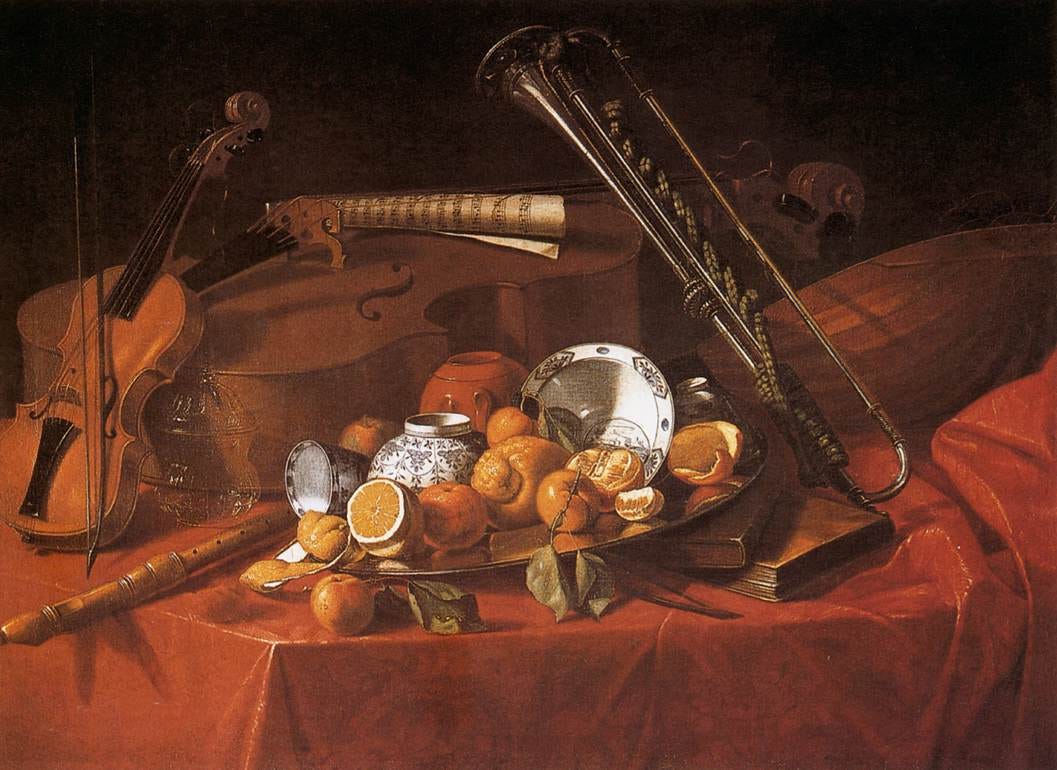
As with every functional tool, musical instruments have dramatically evolved over time. The oldest instruments that have been found are flutes made out of bone from approximately 40,000 years ago.

Today’s flutes are made out of various types of metal and have a rather complex system of pads and keys.

The sound of the flute, accordingly, has changed from this —
To this —
However, there isn’t always a direct corollary between technological evolution and artistic development. Why? Because technological demands were more often than not tied to sound production, not quality.
As the middle class grew in 18th and 19th century Europe , the demand for entertainment grew in kind. What was once available only to the aristocracy, the consumption and patronage of the arts, now became available to the nouveau riche. What was once only meant for the antechamber and private ballroom, now demanded concert halls and grand opera houses. Consequently, instruments that were originally designed to be only heard in small spaces now needed to be heard in much larger venues. This new paradigm not only affected the design of the instruments but the way they were played. Over time, some instruments were able to be modified or changed to meet these larger acoustical spaces, and others became obsolete and discarded.
One of these discarded instruments was the cornetto. Not to be confused with the modern-day cornett, the cornetto was an incredibly versatile instrument and equal in popularity and virtuosity to the violin from the 15th to the 17th centuries. It was two pieces of slightly curved wood with seven holes (one for the thumb) that were wrapped in leather and played by buzzing into an acorn-shaped mouthpiece.
Here’s a wonderful little introduction to the cornetto.

Don’t let its simplistic look deceive you. Much like modern day trumpet virtuoso (the trumpet essentially replaced the cornetto), cornettists were rockstars of their day…Just watch!
The music of Giovanni Gabrieli, much loved by brass players now, was originally written for the cornetto, not the trumpet. Listen to the speed and fluidity of the notes as they fly by on this mellifluous instrument!
Now listen to the same piece performed by what most brass players consider the epitome of modern brass playing.
Comparing the sounds and styles of playing on these two fantastic recordings would be like comparing an ornately carved 17th century wooden carriage to a 1965 Mustang. The instruments and the style in which they’re played serve their original purpose, as well as achieve a state of grace.
A cautionary tale. Two things wiped out the cornetto: technological advance and disease. The violin eventually won out because you could play an unending phrase on a string instrument (no breathing required), and the plague ravaged Venice in the early and middle parts of the 17th century, killing off the heart of cornetto manufacturing and teaching.
In the context of this article, the evolution and development of the violin is probably the easiest to see and hear. In the next video, a performance of a Bach’s Violin Partita №2 in D minor, I’d like for you to watch for a couple of things. Look at the bow. The bow during Bach’s time was completely different from the modern bow of today and essentially looked like this.

Also, look at the woodwork and color of the wood of the instrument.
Finally, listen to how the excellent violinist, Shunske Sato, plays the piece…don’t listen to hard, it’ll become obvious when watch the next video.
Now watch and listen to the legendary Itzhak Perlman perform the same piece. Notice the modern bow, which has the completely opposite curve in the wood than a baroque bow.

Also, Perlman’s instrument is devoid of florid woodwork because the fingerboard (the long, skinny part where a violinist’s fingers depress the string) is made from a darker wood. Most importantly, however, listen to the difference in how these two artists produce sound and, consequently, make music.
There are other differences that you can’t really see. For instance, string instruments during Bach’s time and into the early twentieth were strung with strings made from cat intestine. Yes, I know, ew, but before steel wire was invented, this is what was used in all things that required resiliency under tension. Modern instruments use a combination of different metals and synthetic catgut. Why? Because higher tension can produce a much louder sound, and as I mentioned earlier, bigger halls need louder instruments….
Let me reiterate, I’m not arguing that one performance and/or interpretation is better than the other. What I am saying is that technological innovation has made the modern violin louder, and that’s it.
Technological innovation during the 20th century has developed at such a fast rate that instruments have dramatically changed within our lifetime, not over the course of centuries. Watch the great Robert Tuner play a real Hammond B3.
And here is the sound of a Hammond B3 patch that can be found on most synthesizers today.
This is another great example of technological innovation having nothing to do with advancing the sound of an instrument, but merely accommodating the needs of a modern, advancing society.
